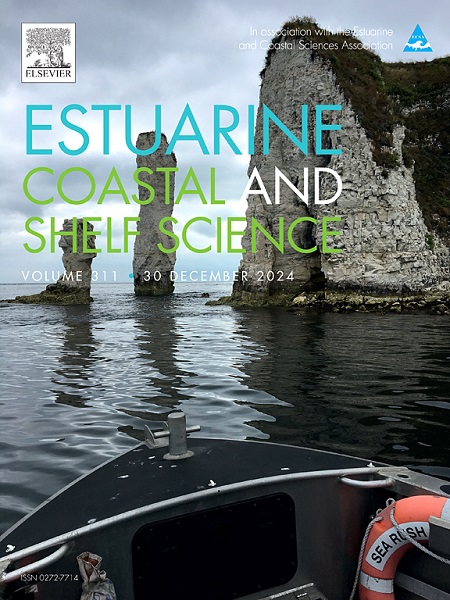Crab bioturbation leads to more CO2 efflux in native than in invasive salt marshes
IF 2.6
3区 地球科学
Q1 MARINE & FRESHWATER BIOLOGY
引用次数: 0
Abstract
Coastal wetland ecosystems harbor diverse plant and macrobenthic species but are highly susceptible to invasion by non-native species. The combined impact of macrobenthic organisms and plant invasions on carbon cycling, however, remains insufficiently understood. This study investigated four herbivorous, burrowing crab species inhabiting Spartina alterniflora (SA) and Phragmites australis (PA)-dominated salt marshes in China and the USA to evaluate their influence on carbon fluxes under varying conditions of plant invasion. Key findings include the following: (1) In native S. alterniflora marshes, Sesarma crabs significantly reduced plant biomass through herbivory, whereas fiddler crabs in the USA and Chiromantes crabs in China displayed omnivorous feeding behaviors that contributed to maintaining ecological balance with vegetation. (2) Salt marshes dominated by Sesarma crabs exhibited signs of ecosystem degradation, characterized by elevated soil CO₂ fluxes compared to other S. alterniflora sites (5.083 ± 2.59, 3.761 ± 2.97, and 2.555 ± 1.63 μmol m⁻² s⁻¹ in die-off native, healthy native, and healthy invasive S. alterniflora sites, respectively; P > 0.05). (3) Plant invasion emerged as a more significant driver of soil CO₂ flux than crab feeding behavior, with CO₂ emissions being 2.116 μmol m⁻² s⁻¹ higher in native habitats (P < 0.05) and 1.675 μmol m⁻² s⁻¹ higher in sites dominated by herbivorous crabs (P > 0.05). Additionally, the positive correlation between crab abundance and burrow density, along with the negative correlation between burrow density and root biomass, highlights the complex interactions shaping carbon dynamics. This study addresses a critical knowledge gap regarding the role of crab activity in influencing coastal wetland carbon emissions and provides valuable insights for quantifying and modeling CO₂ fluxes in these ecosystems.

求助全文
约1分钟内获得全文
求助全文
来源期刊
CiteScore
5.60
自引率
7.10%
发文量
374
审稿时长
9 months
期刊介绍:
Estuarine, Coastal and Shelf Science is an international multidisciplinary journal devoted to the analysis of saline water phenomena ranging from the outer edge of the continental shelf to the upper limits of the tidal zone. The journal provides a unique forum, unifying the multidisciplinary approaches to the study of the oceanography of estuaries, coastal zones, and continental shelf seas. It features original research papers, review papers and short communications treating such disciplines as zoology, botany, geology, sedimentology, physical oceanography.

 求助内容:
求助内容: 应助结果提醒方式:
应助结果提醒方式:


